Hi Guys,
Here is a nice challenge to try:
5 blue 1 red, repeat. You can use any part you want.
Have a go, Leo
Hi Guys,
Here is a nice challenge to try:
5 blue 1 red, repeat. You can use any part you want.
Have a go, Leo
Try as I might I can’t get it! I can make it do 5b1r but not repeat.
It was quite a while ago since I started this topic and I can not recall if I made it or not. Give me a little more time to get back on it. Btw: nice that you replied!
Nice! 5 1 5 1 4 1 4 1
If you face the gears to the right, then there is that sequence. 51514141.
(Now it is 4141 etc)
I finally had some time to think about how to solve your puzzle. I was hoping for a clever way to have a counter that, when it reached five, would somehow reset to zero again. I suppose that is kind of what my solution does, but not in the way I was imagining. Anyway, this was fun to think about.
I’ve included a link below with the solution - you should be able to click on it, or paste it into your browser. I’ve also included a screenshot.
The board could be made significantly smaller. I started out with a lot of space, and didn’t think about optimizing… and now don’t have the patience to try.
Here is the idea. The stack of gear bits on the left is a count-down counter that starts at 4, counts down to 0 (with 4 balls), and then on the 5th ball, the counter “underflows”, and this causes a ball to cross over to the red side and release a red ball.
Beneath the red are three pairs of gear bits, whose purpose is, with one red ball, to set the counter on the left back to the value 4. (So, it sets the top two gears to the left, and the bottom gear to the right.) The pattern of two connected gear bits offset diagonally like this: / is a “write 1” configuration. After a ball goes through, they are set to 1. The pattern of two connected gear bits offset diagonally going down, like this: \ is a “write 0”. So, the solution works by connecting these write-0 and write-1 gear bits back to the original count-down counter.
I hope this makes some sense.
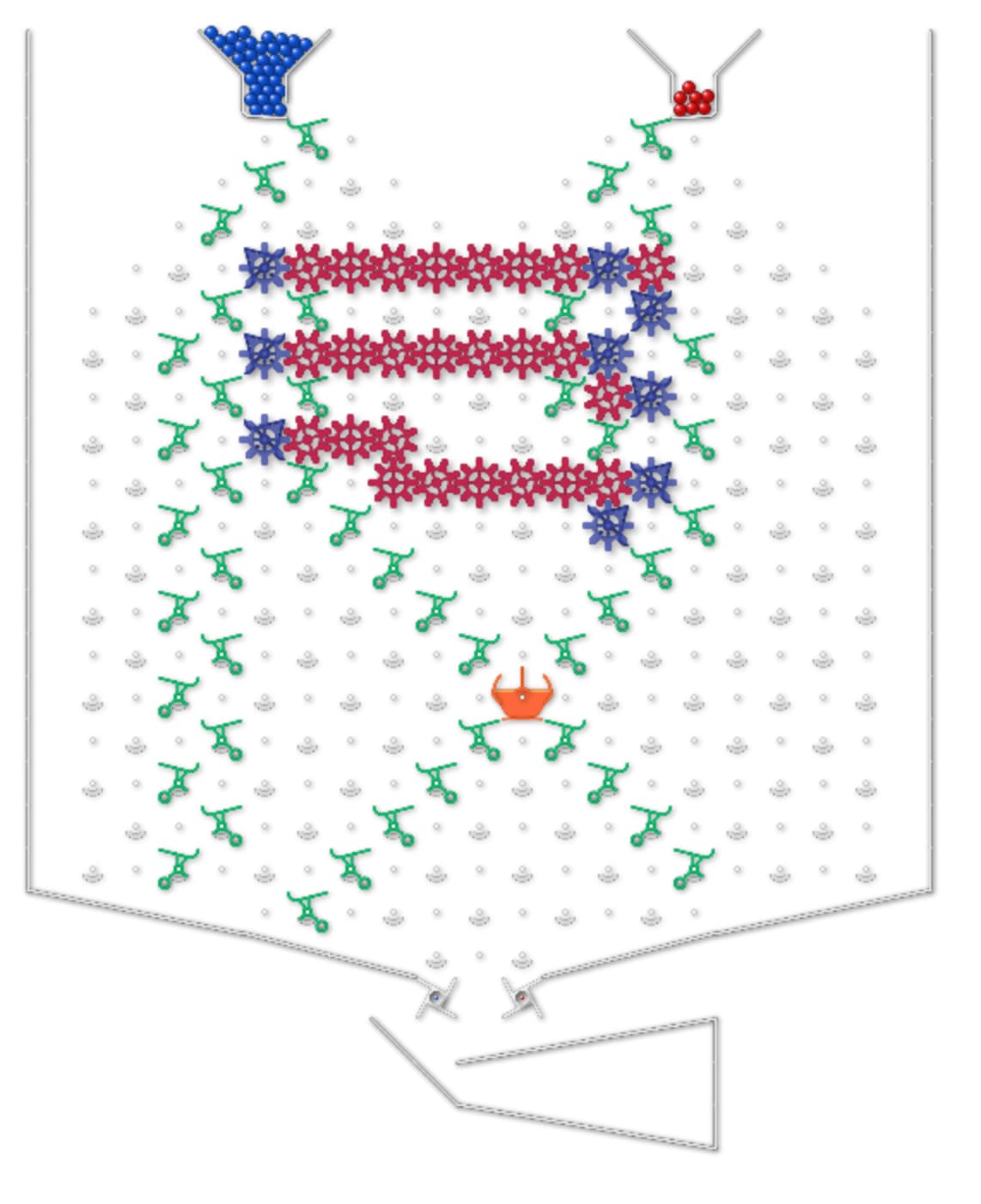
Thanks so much for the effort and the result @lennypitt ! I like the design as well as your explanation.
For me it would be a challenge to make the configuration on the actual/ physical board.
I will think about that for a while. Meanwhile I made this: Tumble Together
It loops twice, then the pattern will go to 4 1 4 1. Nice challenge though!
By the way, still figuring out the Fibonnaci 1, 1, 2, 3, 5, 8 on the actual bord. I got stuck after 3, so will take some development time 
Here is what it looks like much smaller - I think this is the regular board size.
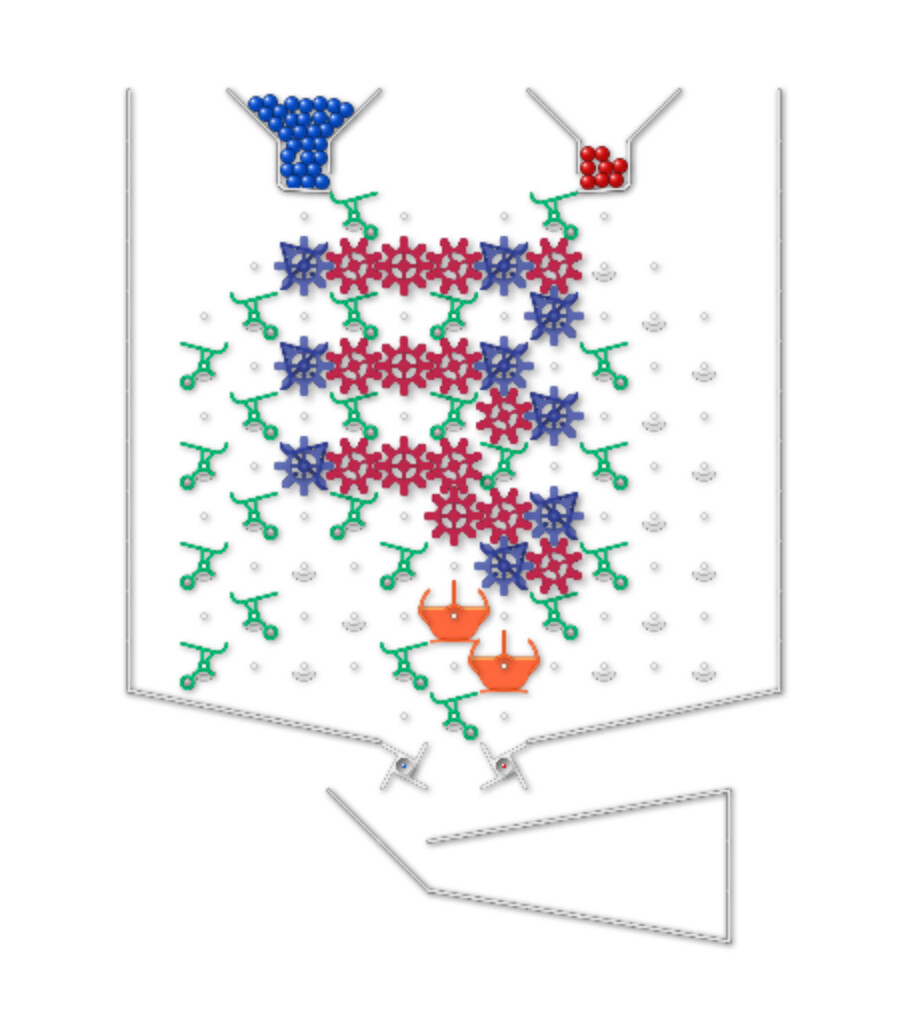
Amazing @lennypitt , thanks again.  Tumble Together
Tumble Together
I’ve also tried your setup in Tumble Together as a haven’t got enough gears in the physical box (gonna order some more 
 )
)
I hope I’m not too late for this, how did I do? This is as small as I could get.
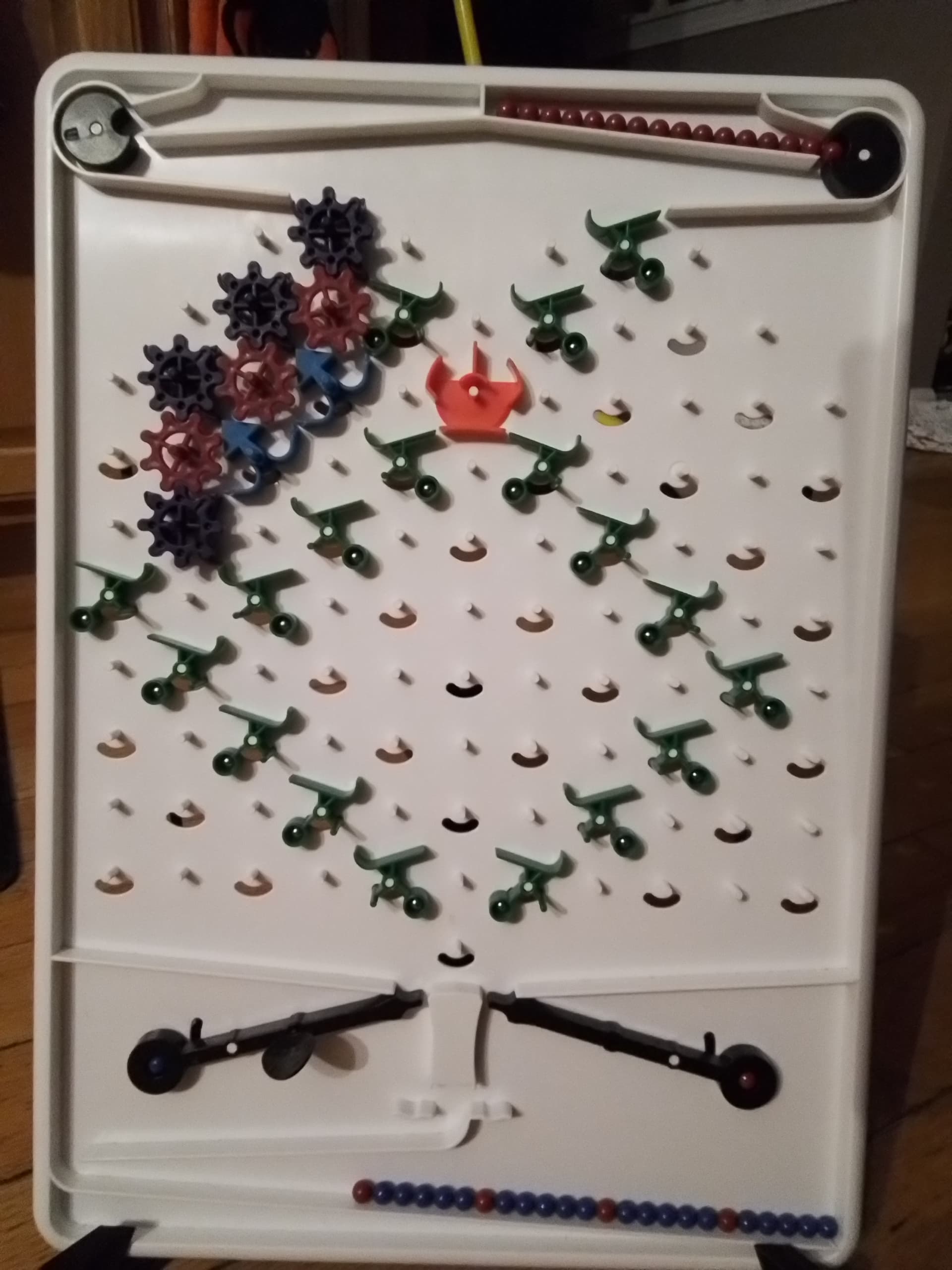
Amazing! Well done. I’ve put your solution in the emulator:
Very nice, well done … and with less parts!  chapeau!
chapeau!
The initial and current combination are the same, hence there will be an infinite repetition.
(Solver solution)
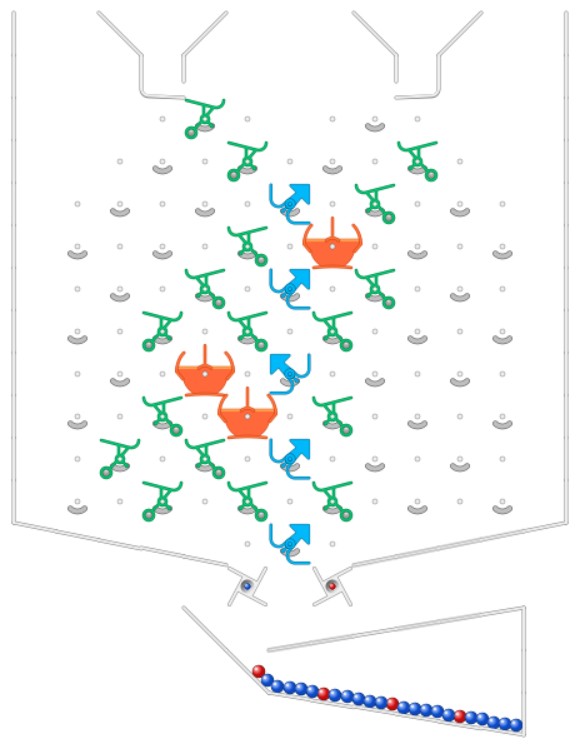
Hola saludos a todos ya que es mi primer mensaje. El reto de la serie 5 azul 1 rojo me ha entretenido bastante ya que otros 1-1; 2-1; 3-1; 4-1; me habian resultado bastante faciles en este mí primer contacto. Esto es lo que me ha salido.
La estrategia en este caso ha sido la de poner un 4 en los bits de la izquierda Bit0=0, Bit1=0 y Bit2=1, y restaurar los bits a cero con engranajes al caer la bola roja .
Con este mismo sistema se podrían lograr series periódicas puntuadas en rojo para otros valores como 6-1; 7;1; etc.
Por ejemplo para 6-1 podríamos en los bits de la izquierda 5 (Bit0=1, Bit1=0, Bit2=1) y restauraríamos los bits a cero Bit0 y Bit1 en el descenso de la bola roja.
Nótese que en primer caso 5=4+1 y en el segundo 6=5+1.
I’m new to Turing Tumble and just solved the puzzles in the box. I’m somehow both amazed and amused about your ridiculously complex designs.
My first idea to this is to use the mechanism, that repeats after every 3 balls and double it with a bit. Then, you launch a red marble, every time the mechanism overflows:
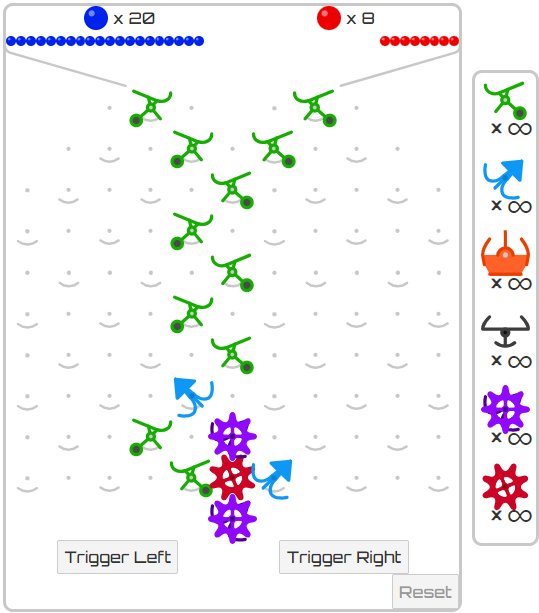
Tumble Together
I can’t add two Screenshots to my answer, but my second approach is a bit more universal. It is to use a standard 3 bit counter and let the red ball subtract 3 from it, so it overflows every fifth blue ball:
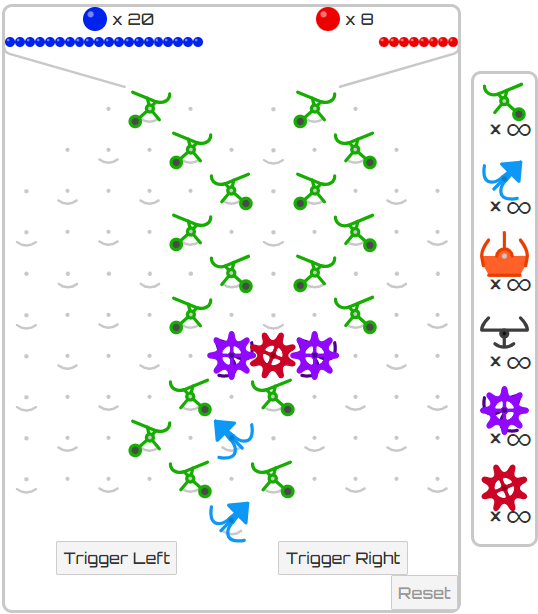
Tumble Together
It’s great to hear you’re diving into Turing Tumble and finding creative solutions! Your approach with doubling the mechanism and incorporating a bit sounds intriguing. Exploring innovative designs can be both fascinating and enjoyable in this puzzle game.
While I may not have a background in beta or ICT education, I take pride in what I have accomplished though. 
Smart and innovative!